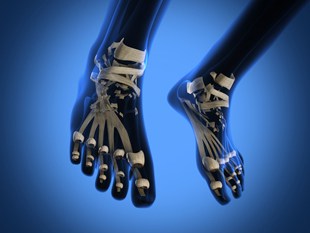DEXA Bone Scan Fact Sheet
Thinning of the bones is probably one of the best-known aspects of aging. Reduced bone density indicates an increased risk of fracture and possibly osteoporosis. Bone density is usually measured by Dual Energy X-ray Absorptiometry (DEXA).
Overview
The Dual Energy X-ray Absorptiometry (DEXA) test scans the bones to determine bone density and compares scores to the maximum bone density from young people to see how the bones are holding up to the aging process. The comparison is called the T-score. A low T-score generally indicates a loss of bone density., and the lower the T-score, the greater the risk of fracture.
Bone density is more commonly measured in women as men have a greater peak bone density and it takes much more bone loss to lead to bone fragility and increased risk of fracture. However, men still experience bone loss and bone density can still be used to track the aging process.
In both men and women, there is a strong association between changes in bone density and age-related changes in other systems, including the lungs, heart and kidneys. Moreover, when compared to people of a similar age, those with a lower bone density (T-score) have a higher risk of cancer, heart disease and overall mortality.
How it is Done
A DEXA scan is done with a machine that uses two X-ray beams, one with high energy and the other with low energy. The machine measures how much of each X-ray is able to pass through bones. Dense bones allow less of the beams to pass through. A calculation of bone density is made from the difference between how much of the two beams are able to get through bones.
The DEXA test scans the spine, hip and sometimes the wrist to determine bone density in as little as 10 minutes. These are the areas most associated with bone fractures. A simple x-ray of the hand can also be used to identify age-related changes, including reduced bone density, areas of scarring (sclerosis), and deformities of the joints. From these combined features, a score can be derived that approximates biological age and predicts longevity and mortality.
Urinary N-telopeptide excretion (NTx) and vitamin D levels have also been put forward as potential markers of future bone health, but the utility of measuring either remains unproven.
Who Does the Test?
General practitioners and medical specialists.
When and How Often?
Every five years is the average frequency, beginning in women around the age of menopause. Men should get a DEXA scan if they have an increased risk of fracture.
Issues
A DEXA test is painless, relatively fast, and exposes people to only a small amount of radiation.
References
- Fast Living Slow Ageing; Kate Marie and Christopher Thomas; 2009
- DEXA Scan (Dual X-ray Absorptiometry)
Last reviewed 26/Feb/2014
